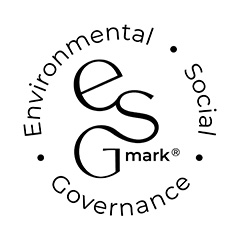What are the tax implications of a company making a loan to a participator?
It may sound like a great tax loophole to own your own company, build up wealth in that company, and then lend it to yourself, indefinitely, thereby putting off the day when you subject yourself to income tax on the extraction. HMRC has long been aware of this ploy, and as a result, make use of anti-avoidance legislation under Section 455 (s.455) Corporation Tax Act 2010.
What is s.455 tax?
Where a loan or advance has been made to a participator (see below) from a close company (also defined below), under s.455 CTA 2010, the loan is subject to Corporation Tax at an Income Tax rate. It is the company, rather than the participator which will initially suffer the ‘penalty tax’ charged on the loan made.
What is a close company?
A close company is a company which is resident in the UK and is controlled by either:
- five or fewer participators; or
- any number of directors who are also shareholders.
Please note that a ‘participator’ is a shareholder or any other person who has a share or an interest in the capital or income of the company. Less commonly this can therefore include some loan creditors.
As a result of this, most private companies in the UK are deemed to be close.
Situations where these rules can apply
As mentioned above, the tax can apply when a close company makes a loan or advance to:
- a participator
- an associate (a linear ancestor or descendant, for example, grandparent, parent, child, grandchild, brothers or sisters and spouse or civil partner) of that participator; or
- a partnership of which the person (or an associate) is a partner, where that person is an individual and a participator of the close company in question.
In addition to this, s.459 CTA 2010 also extends the scope of the charge to include ‘indirect loans’. For example, if a close company advanced funds to a third party without a s.455 tax charge arising, and as a result the participator receives a payment via this route (perhaps via an onward loan or gift).
The tax charge and subsequent administration
For loans or advances made on or after 6 April 2022, s.455 tax is calculated at 33.75% of the loan outstanding at the year-end (for loans or advances made prior to 6 April 2022 the s.455 tax charged was 32.5% of the loan). Effectively, the charge amounts to the higher rate of income tax charged on dividends.
Where repayments are made, or the loan is released or written off, in the nine months following the year end, the s.455 tax charge is reduced by 33.75% of the repayments. Consequently, the s.455 tax charged amounts to 33.75% of the loans or advances made in the year that are not repaid within nine months of the year end.
The s.455 tax charge is then paid by the company to HMRC. For small companies (taxable profits less than £1.5m) this would be nine months and one day following the accounting period end. For large companies (taxable profits more than £1.5m) this would be due in quarterly instalments (if taxable profits exceed £1.5m for two consecutive accounting periods).
Exceptions to tax arising under s.455 CTA 2010
A tax charge will not apply if a loan is made in the ordinary course of business. For example, if the company is a bank. Nor does it apply where debts are incurred in the supply of the goods or services in the ordinary course of trade, and the balance does not remain outstanding for over six months.
There is also an exception for directors and employees of the company or associated companies where:
- the loan or advance is £15,000 or less
- the individual works full time for the company or associated companies; and
- the individual does not have a material interest in the company.
For these purposes, a material interest is more than 5% of the ordinary share capital, or entitlement to more than 5% of the company’s assets on a winding up. Please note, when calculating this, the holdings of the borrower’s associates are also taken into account.
Another key exception is any unpaid share capital which is not treated as an ‘advance’ for s.455 tax purposes. This position is supported by the tax case RKW vs HMRC (2014).
Repayment of tax arising under s.455 CTA 2010
Where the loan or advance is either repaid by the participator or released or written off by the company, for example the company has waived the loan, s.455 tax previously paid under s.455 CTA 2010 will be refunded to the company.
Claims for a refund can only be made and be due for repayment nine months and one day after the year end in which the loan reduction occurred. For example, a loan made in the year ended 30 June 2022 which is still outstanding on 30 June 2023 and was then repaid on 1 July 2023. As the repayment is made during the year ended 30 June 2024, the s.455 tax repayment would not be reclaimable until 1 April 2025; 21 months after the repayment.
It is also worth noting that the s.455 tax reclaim process is not made via the company tax return. A separate claim needs to be made to HMRC reclaiming the s.455 tax previously paid. This is usually done by way of writing a letter to HMRC’s Corporation Tax Services Team.
As mentioned above, where a repayment is matched against a loan or advance within nine months of the year end after it was advanced, the amount of s.455 tax payable is reduced.
‘Bed and breakfasting’
The above rules have been exploited in the past whereby a participator has repaid a loan or advance before the due date for payment of the s.455 tax, and then shortly after this, borrowed the same amount again. By doing this, the participator only lost use of the money for a few days, and the company did not have to pay the s.455 tax arising. This is sometimes known as ‘bed and breakfasting’ the loan.
To prevent this from happening, s.464C CTA 2010 was introduced to counter such an action. The current rules state that the repayment of s.455 tax will be restricted if within any period of 30 days:
- one or more repayments totalling £5,000 or more are made by a participator to a close company in respect of a loan to a participator; and
- the participator borrows a total of £5,000 or more from the company.
Consequently, any repayments within that 30-day period are treated as a repayment of the subsequent loan, not the original loan.
Perhaps more significantly, where the repayment is against a loan of at least a £15,000 balance, a wider ‘arrangements’ rule can apply (the review period then being possibly much longer than 30 days).
It is important to mention, s.464C CTA 2010 will not apply to a repayment of a loan which is made from income chargeable to income tax. For example, if a participator was paid a bonus or a dividend by the close company and the participator then used the bonus/dividend to repay their loan, the 30-day rule does not apply, and the repayment is matched to the original loan and not the subsequent loan.
Loan write-offs / Releases
A company may choose to release or write off a loan rather than require repayment. Under s.415 ITTOIA 2005, where a loan to a participator is written off by a company, the participator will be treated as receiving a dividend equal to the amount of the loan written off or released. This will be subject to income tax at the participator’s marginal rate of income tax.
The date of receipt of the deemed dividend will be the date the loan is released or written off.
Where the participator or associate is an employee, the loan release or writing-off is treated as earnings from employment for National Insurance purposes. As a result of this, the loan written off will be subject to Class 1 Primary National Insurance contributions and the employee will pay 12% or 2% (rates for the 2023/24 tax year), depending on their level of employment income.
In addition to this, the company will pay Class 1 Secondary National Insurance Contributions (NICs) at 13.8% (the rate for the 2023/24 tax year). The NICs paid by the company will be deductible for Corporation Tax.
Cheap or non-interest loans
Where the participator is receiving a loan from a close company and is also an employee or director of the company, if the close company either charges no interest or charges interest below the official rate on the loan while it is outstanding, a taxable benefit is levied on the participator.
There is however an exemption from triggering a taxable benefit where the total balance outstanding on the loan does not exceed £10,000 throughout the tax year.
Conclusion
The loan to participator provisions continue to be a key tax protection for HMRC. Even if the liability is temporary, they ensure that HMRC collects tax in circumstances when a shareholder is otherwise personally able to enjoy company funds. It is therefore important to be mindful of the above rules when considering taking a loan from a close company.
Should you have any questions in connection with the above, please do not hesitate to contact us.
If you have any questions about the above, or would like more information specific to your circumstances, please enter your email address below and we will get in touch:













